Unless the mass of workers are to be blind cogs and pinions in the apparatus they employ, they must have some understanding of the physical and social facts behind and ahead of the material and appliances with which they are dealing. – Schools of Tomorrow John Dewey; Evelyn Dewey 1915
Children today need to understand, just as fully as did previous generations, how the things that surround them are made. Children need to learn to appreciate and to value the work of the skilled craftsman. – Let’s Make It NY State Education Department 1958.
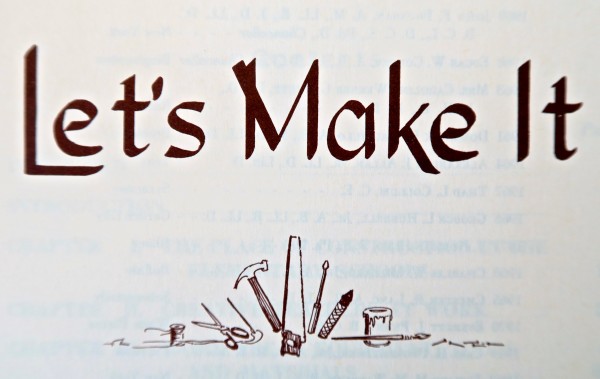
I have the most wonderful book in my hands. It’s actually a spiral bound bulletin from the NY State Education Department published in 1958.
Let’s Make It is a curriculum guide for elementary school – full of advice, recommendations and practical suggestions for materials tools and projects.
These days we would call it a Makerspace Playbook and add a chapter or two about circuits, wearables, design thinking, cardboard challenges and the like.
It creates the sense that the best schools in the 1950’s were hives of creative craft and industry with an abundance of imaginative, interdisciplinary projects. And that teachers were encouraged and expected to be creative and resourceful. 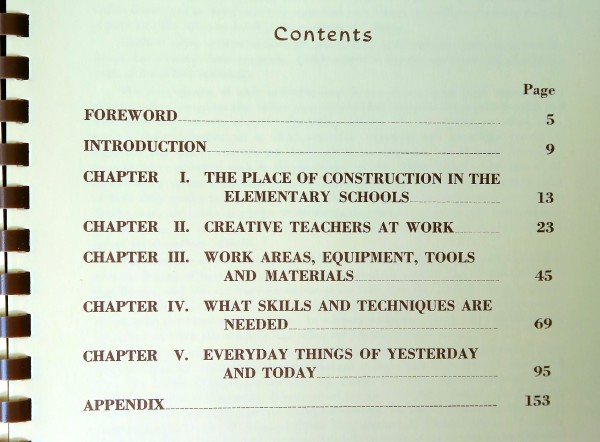
It opens with the rationale for the construction in the elementary school and then – look at the table of contents – (almost) everything a modern maker-teacher might need! It even includes floor plans for active, creative classrooms.
There are detailed plans for all kinds of construction projects with paper, wood, clay, cloth – you name it – so that children create their own playthings, playhouses and models. And detailed outlines of how to get started. (No power tools because they belong in junior high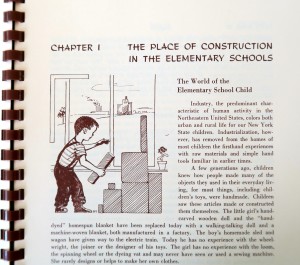
school!)
Among the many house construction ideas (adobe house, wigwam, English cottage, Belgian Congo huts, Eskimo Winter camp etc.) is a set of instructions for building a colonial log cabin.
We have photos in the PDS archive of that cabin complete with children playing dressed in colonial costume.
Maybe PDS had this guide as a reference!
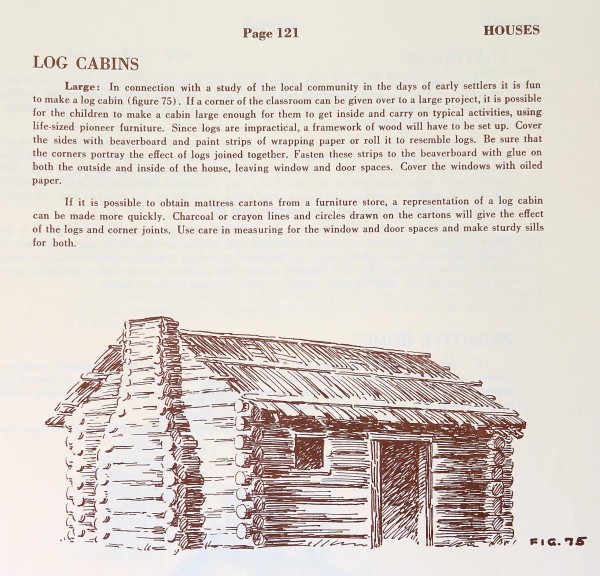
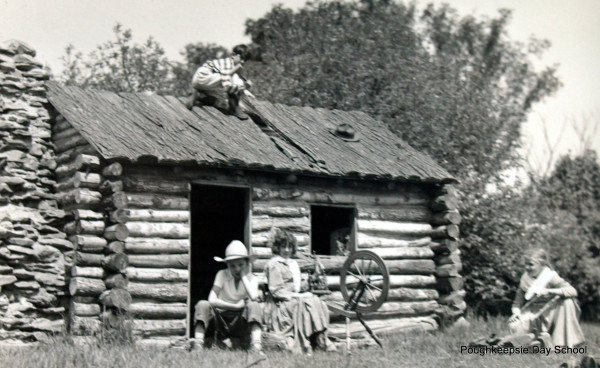
And look at those children on the roof (they danger!) and playing with planks (the splinters!) and the photos in the book of children using saws and hammers. The freedom! The trust! The risk!
There’s a terrific side-by-side
list of “What the Children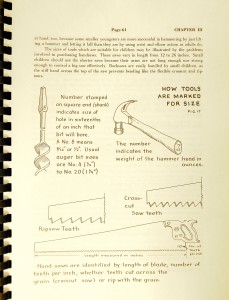
May Do” and “How the Teachers Guides”.
It establishes clearly that the children are at the center of the activity, trusted to be responsible and to take ownership of the process. The teacher is the wise – but not all-knowing – steadying guide-at-the-side who provides, directs, observes, encourages, shows and takes kids on field trips to museums and workshops.
1958 was also the year after Sputnik – the shock felt around the world and that in the U.S. heralded a new era of heightened alarm about academic standards and international competition. Let’s Make It was probably in process before that launch and the ensuing great clamp-down. Back-to-basics and traditional notions of time-on-task and test scores have always been with us and Sputnik sent folks into one of our collective convulsive periods of anxiety. There was some respite in the late 1960’s and 1970’s that ended with a resounding thump with the arrival of A Nation at Risk in 1983. We’ve been imperiled ever since!
Let’s Make It is a gentle reminder that classrooms have not always been number-obsessed test factories. Things have not always been that way. Back in the day the elementary school curriculum used to have ample room for creativity and construction. The modern maker movement provides one of the glimmers of hope that things may again be shifting.
Now that making and makerspaces have gone mainstream there is no shortage of resources to help schools get started. Laura Fleming is a librarian/ media educator in New Jersey and her Worlds of Making: Best Practices for Establishing a Makerspace for Your School (part of the excellent Corwin Connected Educators Series) is a modern counterpart. It makes for an interesting comparison. And of course, the thinking of John Dewey flows through both like a thread of DNA.
Let’s Make It also provides a sobering insight into the deeply gendered notions of that era and in this realm in particular. Boys wield hammers and saws and play with sleds and wagons and trains. Girls get to watch and admire and play with dolls and brooms. It is not explicit in terms of the activities but the pictures tell the story. Here’s the endpiece.
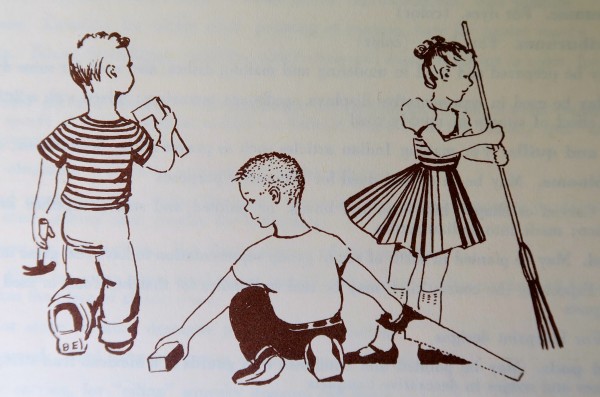
We have made a little progress in that area – pink legos notwithstanding.
The book comes to PDS via parent-trustee Christine Agro. It belonged to her mother – Trudy Viscardo – who was a New York teacher. Thank you Christine and Trudy for sharing this gem.



Accurately identifies the world we lost once we became mired in ‘back to basics’ and NCLB.